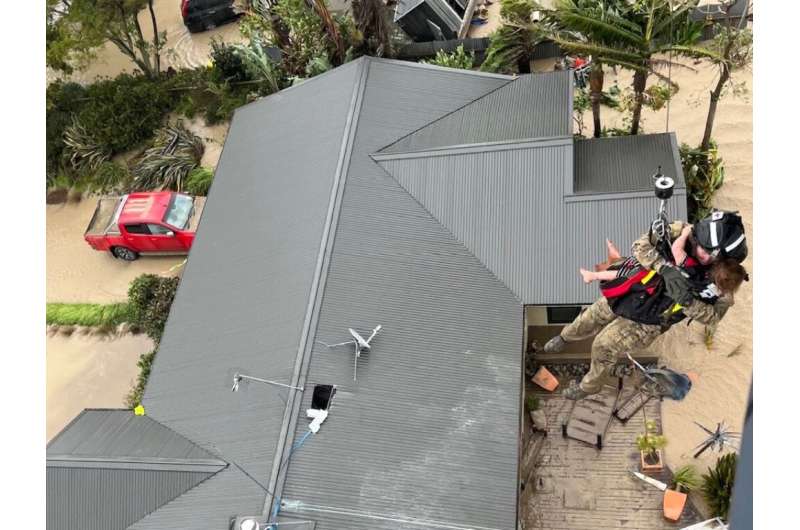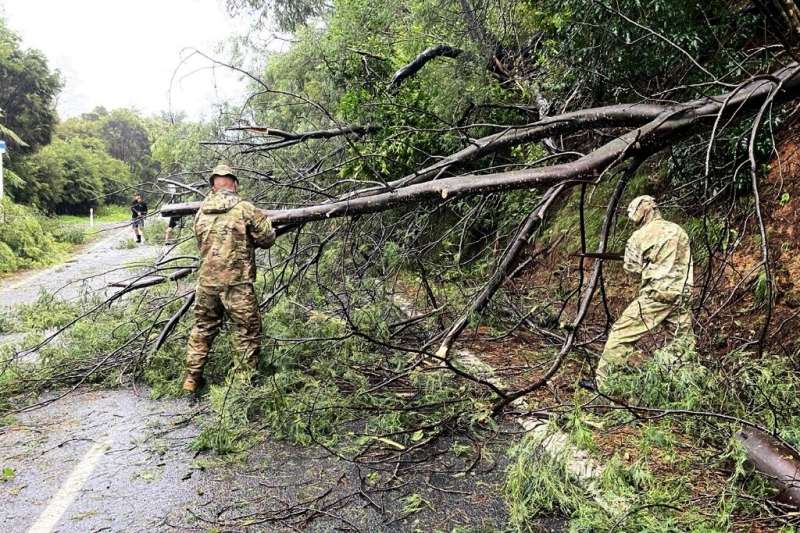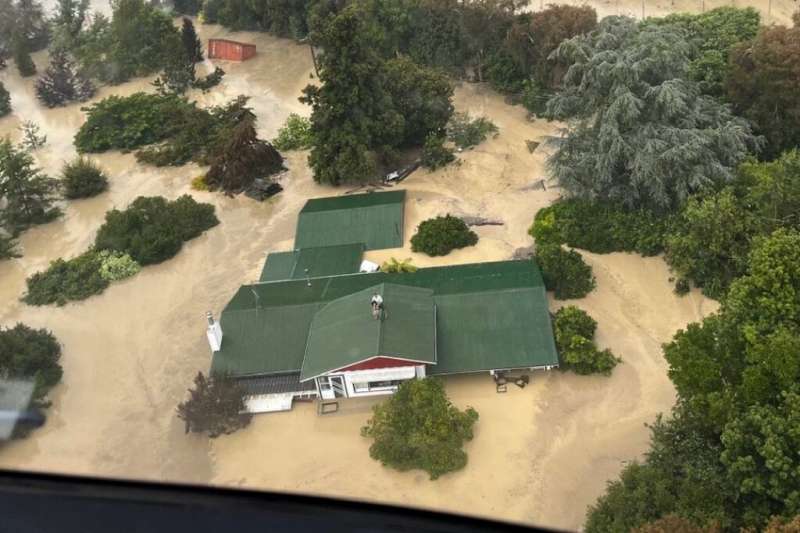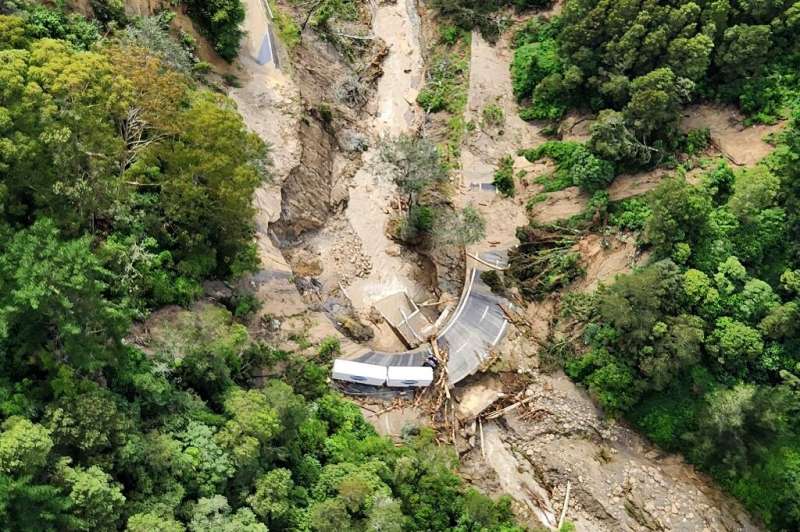This article has been reviewed according to Science X's editorial process and policies. Editors have highlighted the following attributes while ensuring the content's credibility:
fact-checked
reputable news agency
proofread
Survivors plucked from rooftops as New Zealand cyclone kills four

Military helicopters winched stranded storm survivors to safety in New Zealand on Wednesday, after Cyclone Gabrielle killed four people and displaced 10,500 more.
With the storm now fading into the South Pacific, rescue teams are finally reaching regions cut off by days of torrential rain and gale-force winds.
The New Zealand military deployed three NH90 helicopters on reconnaissance and rescue flights to the hard-hit Hawke's Bay area, finding families, pets and workmates clustered on sodden zinc rooftops—surrounded by a sea of murky, debris-filled floodwater.
"In some cases, floodwaters were up to the second storey of homes where people were being rescued," a military spokesperson said.
The disaster has severed roads, collapsed houses and cut power across a swathe of New Zealand's North Island, home to more than three-quarters of the country's five million residents.
The human toll continues to rise. Police said the body of a child was found in a town on the remote east coast, with the youngster "believed to have been caught in rising floodwater".
Three other bodies have also been recovered, including a woman killed when her house was crushed by a landslide and a victim believed to be a volunteer firefighter trapped by a collapsing home.

"The devastation is widespread and has taken a toll beyond property and livelihoods to people," New Zealand Prime Minister Chris Hipkins said.
"There have been four confirmed fatalities and the grief must be unimaginable."
With the cellphone network disrupted, police have received over 1,400 reports of people who are still "uncontactable".
"We expect the vast majority of these people will be accounted for," Hipkins said, "but there are several people missing for whom police hold grave concerns."
At an evacuation centre in Whangarei in the far north, Margaret, 66—who asked for her surname not to be published—said she fled her property when floodwater poured in and the power went out.
Her daughter, who lives 600 kilometres (373 miles) away in Napier on the east coast, was also forced out of her home when a landslide hit the area.
"She'd been calling me earlier, checking I was okay and then she's had this happen; it's unbelievable, really," she told AFP.
"She's young, so it's a big setback for her and her husband. I'll be ok, I've got people up here I can stay with and things will dry out eventually."

'The long haul'
Emergency minister Kieran McAnulty indicated that around 10,500 people had been displaced. Officials estimate 160,000 households are still without power.
McAnulty hailed the "phenomenal" efforts of rescue workers and military personnel who plucked "roughly 300 people from rooftops" in Hawke's Bay—a sprawling expanse of lush farmland, rugged mountains and hard-to-reach towns.
He said a group of 60 people were rescued from one large building marooned by floodwaters.
Aerial images from the area showed a once-bucolic landscape riven with torrents of floodwater, latticed with crumbling roads and scarred by massive landslides.
Authorities on Tuesday announced a national state of emergency for only the third time in the country's history. The other two were for the 2019 Christchurch attacks and the COVID-19 pandemic.
Cyclone Gabrielle formed off the northeastern coast of Australia in the Coral Sea on February 8, before barrelling across the South Pacific.

It bore down on New Zealand's northern coast on Sunday, bringing gusts of 140 kilometres (87 miles) an hour.
Over the next 24 hours, coastal communities were doused with 20 centimetres (almost eight inches) of rain and pounded by 11-metre (36-foot) waves.
Many parts of northern New Zealand were already waterlogged when Cyclone Gabrielle hit, having been drenched by record rainfall two weeks ago.
Scientists say Gabrielle had fed off unusually warm seas, driven by a combination of climate change and La Nina weather patterns.
© 2023 AFP



















